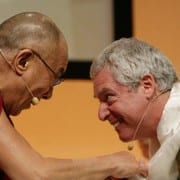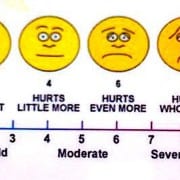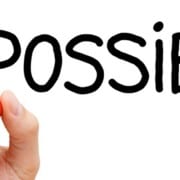An interview with B. Alan Wallace about Buddhism, science, and the nature of mind
Tricyle Magazine
December 18, 2014
Six Questions for B. Alan Wallace
An interview about Buddhism, science, and the nature of mind
The past four centuries have brought an explosion of scientific knowledge and technological know-how. The march of material progress has, however, left many Buddhist practitioners wondering whether Western society’s external transformation has been matched by an internal one, and if so, what role Buddhism can play in promoting a deeper understanding of both the external and internal worlds. Below, B. Alan Wallace, a uniquely interdisciplinary thinker, responds to six questions on this subject.
Wallace has been a scholar and practitioner of Buddhism since 1970. After spending 14 years training as a Tibetan Buddhist monk and receiving ordination from the Dalai Lama, he went on to earn an undergraduate degree in physics and the philosophy of science and later a doctorate in religious studies. He has written numerous books, including Choosing Reality: A Buddhist View of Physics and the Mind (1989), The Taboo of Subjectivity: Toward a New Science of Consciousness(2000), and, most recently, Meditations of a Buddhist Skeptic: A Manifesto for the Mind Sciences and Contemplative Practice (2011). Wallace is, then, well-versed in both Eastern and Western traditions.
Like many people in the Western world, I’ve been raised on a materialist philosophy but have also long been intrigued by questions traditionally belonging to spirituality. And also like many people in my generation, who came of age in the ’70s and ’80s, I’ve long wondered how we can mesh the insights of modern science with a more compassionate and integrated view of the world. Indeed, it seems to me that meshing the spiritual insights of East and West with the more recent tradition of Western scientific inquiry is perhaps the most promising route to a forward-thinking worldview today.
The following interview was conducted over email.
—Tam Hunt
Tam Hunt, a visiting scholar in psychology at UC Santa Barbara, has written about the need for Western science to become less dogmatic and to expand from its overly materialist worldview. In addition, he has written about the need for Buddhism to grow from its traditional roots by, in particular, embracing the insights of an evolutionary worldview that takes seriously the passage of time. His recent book, Eco, Ego, Eros: Essays in Philosophy, Spirituality and Science explores many of these themes.
—Ed.
Why is Buddhism important in today’s high-tech world? The growth of scientific knowledge and technology since I entered my adult years in 1970 has been phenomenal. Never before has humanity so expanded its knowledge and exerted its power over the external world. But in that same period, the human population has doubled; and due to human exploitation of the natural environment, the wildlife population of the planet has been reduced by half, while global warming has imperiled human civilization at large and the ecosphere.
During these last 40 years, when human knowledge of the physical environment, biology, sociology, and economics has increased at an unprecedented rate, modern civilization has seemed hell-bent on destroying itself. For example, before 1970, most of the income gains experienced during economic expansions accrued to most of the people, so that the bottom 90 percent of earners captured at least a majority of the rise in income. But during the 1990s and early 2000s, the huge majority of income gains went to the top 10 percent, and from 2001 to 2007, 98 percent of income gains accrued to the top 10 percent of earners. This wild inequality in the distribution of wealth has gotten so out of hand that the 85 richest people in the world own as much as the 3.5 billion poorest, while almost half of the world’s wealth is now owned by just one percent of the population.
This contradiction between the simultaneous explosion of technology and deprivation of the world’s most vulnerable indicates that our knowledge of and power over the outer environment has not even remotely been matched by our knowledge of the human mind and its vices, the inner causes of suffering, and the resources of the human spirit. Buddhism highlights three fundamental toxins of the mind—greed, hostility, and delusion. For all the information at our disposal, made so readily available through the internet, human civilization evidently has not made any progress in diagnosing or treating these afflictions, let alone exploring the resources of the human spirit—compassion, wisdom, generosity, patience, and inner contentment.
If our high-tech world doesn’t balance knowledge of the external, physical resources of our environment with knowledge of the internal, psychological, and spiritual resources of the human mind, then I fear human society will continue on its present course of self-destruction.
What are some key ways that Buddhism is consonant with modern science? Fundamentally, I find Buddhist and scientific methods of investigating reality to be complementary, as are many of their discoveries. Both traditions focus on the empirical and rational exploration of reality, not on accepting beliefs out of blind faith. The Dalai Lama comments: “A general basic stance of Buddhism is that it is inappropriate to hold a view that is logically inconsistent. This is taboo. But even more taboo than holding a view that is logically inconsistent, is holding a view that goes against direct experience.”
This is consonant with an assertion attributed to the Buddha and widely quoted in Tibetan Buddhism: “Monks, just as the wise accept gold after testing it by heating, cutting, and rubbing it, so are my words to be accepted after examining them, but not out of respect for me.” A 3rd-century Indian Buddhist contemplative named Aryadeva claimed in a classic treatise that there are just three qualities one must have to venture onto the Buddhist path of inquiry: one must be perceptive and unbiased, and simultaneously enthusiastic about putting the teachings to the test of experience.
What are some key ways that Buddhism is not consonant with modern science? Despite their commonalities, the methods of Buddhist and scientific inquiry are very different. Buddhist inquiry fundamentally focuses on gaining first-person experiential insight into the reality of suffering, the way that suffering causes imbalances and toxins of the mind, the possibility of freedom from suffering, and the path to such freedom. Buddhism is not concerned with the nature of reality as it exists independently of human experience, but rather with the reality of human experience.
Buddhists have never sought a God’s-eye perspective on reality. The religion is essentially oriented toward the realization of genuine happiness, akin to what the ancient Greeks, starting with Socrates, called eudaimonia. This is a quality of well-being not dependent upon sensory or intellectual stimulation; it stems from leading an ethical, which is to say nonviolent, way of life. Such a path to freedom yields a sense of well-being that emerges from what we bring to the world, not from what we get out of it. The realization of freedom from suffering and its inner causes depends upon the close examination of one’s own experience from a first-person perspective, refined through rigorous meditative training in mindfulness and introspection.
Modern science, on the other hand, tracing back to Galileo, is primarily focused on fathoming the nature of the objective, physical, quantifiable universe from a third-person perspective. The original motivation of science—as expressed by Galileo and other pioneers of the Scientific Revolution—was to understand the mind of the creator by way of his creation. This pursuit of a God’s-eye perspective sought to understand reality as it exists independently of human experience. Rather than refining the mental faculties of mindfulness and introspection, scientists have refined technology to try to fathom the nature of objective, physical reality in the language of mathematics.
The symbiotic development of science and technology over the past four centuries has greatly contributed to humanity’s “hedonic happiness,” which is a kind of well-being that arises from sensory and intellectual stimulation—one that is not contingent on ethics, mental balance, or wisdom. Hedonic pleasures are those we get from the world around us, and unsurprisingly, science has focused on the causes of suffering that stem from the physical world.
Both eudaimonia and hedonic well-being are important, as are the first-person and third-person approaches to understanding reality. For Buddhism, the mind is central to both human existence and the world of experience, while material concerns are secondary. For science, the nature of matter and its emergent properties are central, while the mind and subjective experience are secondary. So there is a fundamental complementarity, and at the same time a certain tension, between these two approaches to understanding the world and the good life.
To my mind, the principal obstacle to a deep integration of Buddhist insight and scientific discovery is the uncritical acceptance among many scientists—and increasingly the general public—of the metaphysical principles of scientific materialism. The fundamental belief of this scientific materialism is that the whole of reality consists only of space-time and matter-energy, and their emergent properties. This implies that the only true causation is physical causation, that there are no nonphysical influences in the universe. When applied to human existence, this worldview implies that subjective experience is either physical—despite all evidence to the contrary—or doesn’t exist at all, which is simply insulting to our intelligence. As the philosopher John R. Searle states in his bookThe Rediscovery of the Mind, “Earlier materialists argued that there aren’t any such things as separate mental phenomena, because mental phenomena are identical with brain states. More recent materialists argue that there aren’t any such things as separate mental phenomena because they are not identical with brain states. I find this pattern very revealing, and what it reveals is an urge to get rid of mental phenomena at any cost.”
It is commonplace nowadays to equate the mind with the brain, or to insist that the mind is nothing more than a function of the brain. But this is merely a metaphysical belief that has never been validated through scientific research. While the mind and brain are clearly correlated in precise ways that have been revealed through advances in cognitive neuroscience, the exact nature of those correlations remains a mystery. This mystery, however, is veiled by the illusion of knowledge that the mind-body problem has already been solved. But, while all other branches of modern science have focused on the direct observation of the natural phenomena they seek to understand, the cognitive sciences have insisted on avoiding such direct observation of mental phenomena. The simple reason for this choice is that subjectively experienced mental processes and states of consciousness do not fit within the materialist paradigm that has dominated science since the beginning of the 20th century.
As both contemplatives and scientists wake up to the limitations of their respective pursuits of knowledge, we may see a renaissance in open-minded, rigorous contemplative inquiry. This flourishing would call for an integration of first-person and third-person methods of research, which may enhance the hedonic and eudaimonic well-being of humanity. The world is facing unprecedented challenges—environmental, economic, social, and moral—and to successfully rise to meet these challenges we must draw on the wisdom of the East and the West, of the ancient and the modern. The same challenges that imperil our very existence may help us unite in ways never before witnessed in human history.
How can we best accelerate the spread of mindfulness and compassion, which are the hallmarks of modern Buddhist practice? We can agree that mindfulness and compassion are virtues that everyone should cultivate and which may help resolve some of modern society’s existential and environmental crises. But to extract these qualities from the rich, integrated fabric of Buddhist theory and practice and then insert them within a materialistic worldview, hedonistic value system, and consumer-driven way of life is unlikely to bring about any deep and lasting change.Modern society’s existential and environmental crises were not created by traditional, longstanding religious beliefs. Rather, these crises arose primarily in the 20th century, the first era in human history that was strongly dominated by scientific materialism. For all the advances in science and technology during that century, it also witnessed the most savage inhumanity of man against man, the greatest decimation of other species, and the most catastrophic degradation of the ecosphere.
A materialistic worldview naturally results in valuing only material things and their emergent properties, such as wealth, power, and status. The hedonistic pursuit of these ideals naturally results in a way of life focused on ever-increasing production and consumption. This fully integrated triad—a materialistic worldview, values, and way of life—is exhausting the natural resources of our planet and helping bring about the demise of human civilization. So we need to look beyond some quick fixes of increased mindfulness and compassion and fundamentally reevaluate our beliefs about the nature of human existence, our values, and the way we lead our lives. Buddhism can contribute greatly to such a renaissance, but not if it is subjected to the same reductionism that materialism has thrust upon human nature.
There is a view fairly described as “Buddhist dualism,” a type of dualism that posits an independent mind in addition to a world of matter and energy. I don’t see Buddhist dualism as a clear advance over hard materialism because it gives rise to its own set of problems, including questions about how mind and body interact if they’re independent of each other. Isn’t there room for a better inegration of mind and body in our philosophical edifice? Modern civilization suffers from a severe imagination deficit disorder in its inability to imagine any alternatives other than materialistic monism or Cartesian dualism. We’ve known since the 19th century that the Cartesian notion of two substantially real kinds of stuff—material and mental—is a dead end, for there’s no coherent way in which they can causally interact. But materialism fares no better in giving a coherent understanding of the nature of subjective experience or how it causally interacts with the brain. So we have two dead ends.
It’s a complete mistake to put the Buddhist view of the mind and body in the Cartesian box, for the rich and diverse schools of Buddhism emerged outside the context of European civilization. Buddhism is not dualistic; it’s pluralistic. It’s much more aligned with the views of William James than Descartes. Or, to bring this into the 21st century, it’s more akin to the views of the eminent physicist George Ellis, coauthor of The Large Scale Structure of Space-Time with Stephen Hawking, considered to be one of the world’s leading theorists in cosmology. He has proposed a fourfold model of reality, consisting of (1) matter and forces, (2) consciousness, (3) physical and biological possibilities, and (4) mathematical reality. All of these levels of existence, he proposes, are equally real and distinct, and they relate to each other through causal links. This model transcends the ideological boxes in which the Western mind has been stuck for centuries, and it accords much more closely to Buddhist views of reality
As for the hypothesis that there is a dimension of consciousness that is not contingent upon a functioning brain, it should be assessed not by logical but empirical facts. In the West, we have ignored our own rich Judeo-Christian heritage of contemplative inquiry, instead equating religious belief with mere reliance upon divine authority. Then we project this same prejudice on Buddhism and other Asian contemplative traditions, never considering that their centuries of first-person experiential investigation might have yielded discoveries that are not accessible through studying the mind objectively.
You’ve acknowledged that Buddhist notions of karma are very difficult to evaluate empirically. If this is the case, isn’t this indicative of a need for reform? Shouldn’t Buddhism be entirely empirical? Why be so casual in dismissing what may be one of the greatest discoveries of the Buddhist tradition, allegedly made by the Buddha himself and replicated many times over the past 2,500 years by numerous, highly accomplished Buddhist contemplatives? There’s an element of ethnocentricity here that is indefensible in the 21st century, namely the notion that scientists have a monopoly on rigorous methods of rational and empirical study of the natural world.
For all the advances in the mind sciences over the past 135 years, scientists have left modern society in the dark about the nature, origins, and causal efficacy of consciousness. And some, like Princeton University neuroscientist Michael Graziano, veil this ignorance by suggesting there is no mind-body problem because there is no such thing as subjective experience.
There is no discipline of knowledge that is entirely empirical, so there is no reason why Buddhism should sacrifice its rich theoretical heritage to satisfy the prejudices of those who can’t imagine that Buddhists have made discoveries of their own about the nature of the mind and its role in nature.







